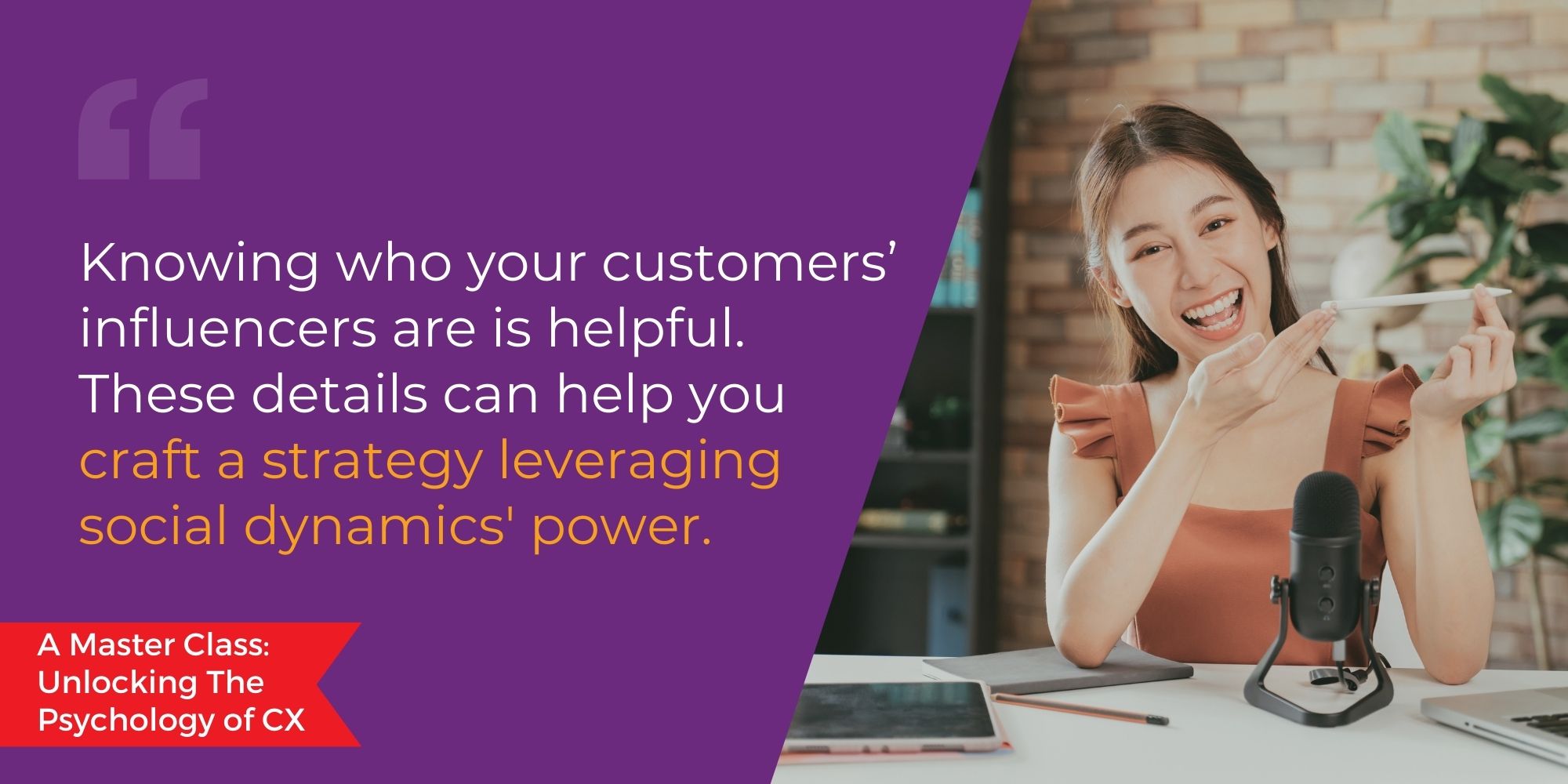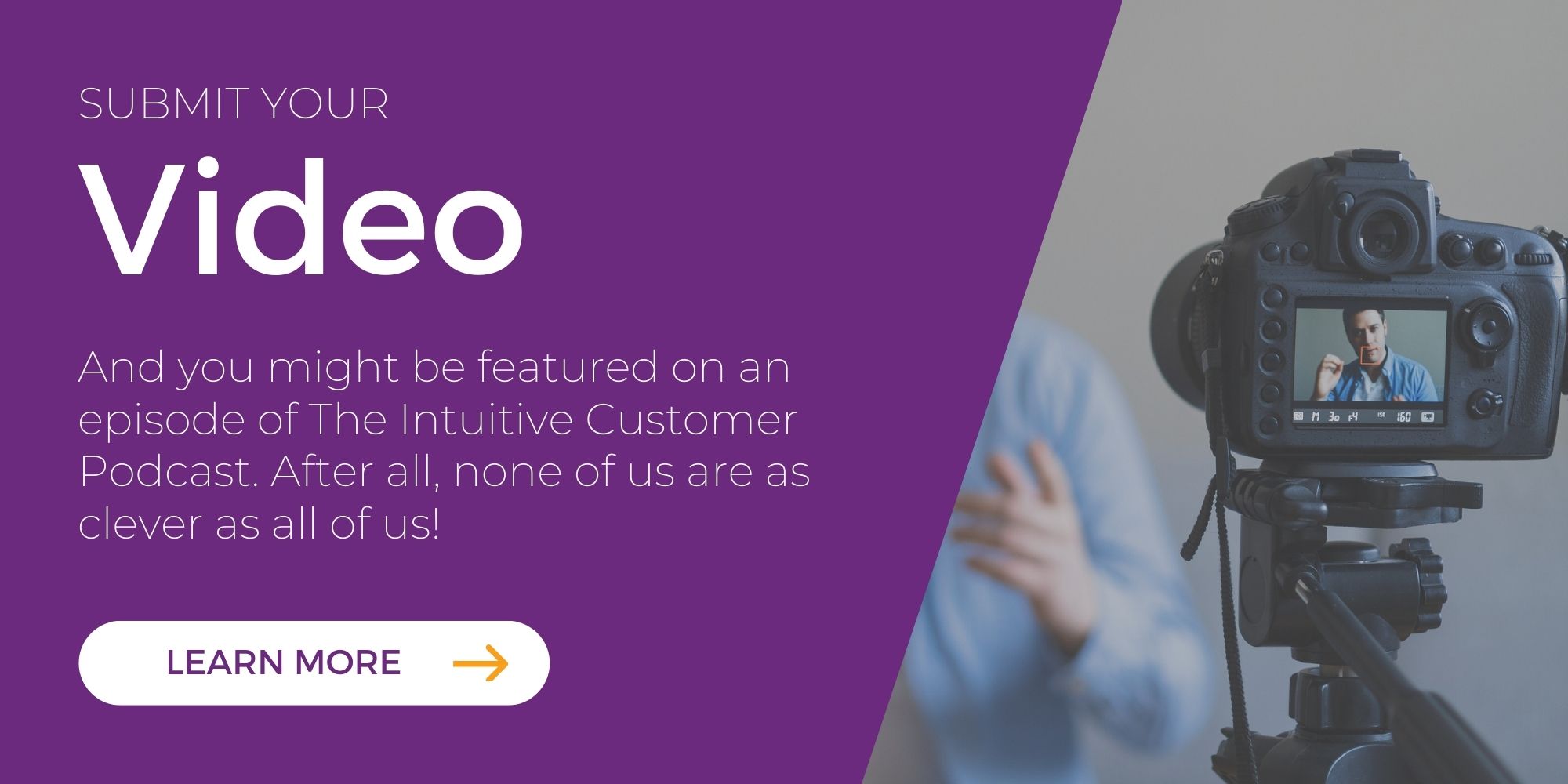A Master Class Part 3: Unlocking The Psychology of Customer Experience
Learn more about Colin Shaw: Join over 80,000 people on our LinkedIn Newsletter list or visit our website for more great podcast episodes.
Listen to the podcast:
Welcome to the third episode of our Master Class series on the Psychology of Customer Experience. This series is designed to explore the foundational concepts of the behavioral sciences. Today’s episode is about some significant ways other people influence our behavior.
Whatever experience you design, there is an element of influence from other people. Therefore, it is essential to consider that in your plan. Ask yourself, “How will other people influence my customer in this area of the experience?”
Robert Cialdini’s works explore influence. Some might even consider him the godfather of social dynamics. Much of his work is about understanding influence and how other people’s influence can persuade others to do things. Today’s newsletter relies heavily upon Cialdini’s work.

The Social Proof
One way that people influence us is through a concept called Social Proof. When we see that other people like something, we are predisposed to like it, too. While there are exceptions to this idea, Social Proof means that if something becomes popular, we are interested in it and want to know more about it.
I have an example of Social Proof from an “evil” friend of mind. One of his favorite things to do was stare up at a building with a confused look, not saying anything. He would exude confusion as if something bizarre was happening. It wouldn’t take very long before other people would join him, looking up to see the odd thing he was seeing. After a crowd gathered, he would walk away, leaving them staring. (Like I said, he was evil.)
While this example isn’t about popularity per se, it does demonstrate how another person’s interest in something can influence another person’s interest.
However, there is another thing happening here, too. You might have heard of FOMO, an acronym for Fear of Missing Out. So, the other thing happening is that people didn’t want to be the only ones who didn’t see the fascinating and bizarre things that were about to occur in the building.
Social Proof and FOMO are foundational elements of social media. From collecting likes to going viral, you can see both concepts working in this medium.
However, social proof doesn’t mean that you value everyone’s opinions equally. It means that you value the views of specific people. There are people that if you knew they liked something, you wouldn’t like it for that reason alone. We also often have in-groups, people whose opinions we value, and their influence via Social Proof is especially strong. In other words, if it’s good enough for Joe, it’s good enough for me.
Influencers on social media capitalize on this concept, too. If you have a person you listen to or subscribe to on a social media platform and they recommend something, you are likely to take that recommendation. You like it because they like it, and that’s good enough for you. Surprisingly, this relationship at a more intense (and unhealthy) level is the same one observed in cults.
Knowing who your customers’ influencers are is helpful. Ask yourself who they listen to and which authority figures influence them. These details can help you craft a strategy leveraging social dynamics’ power.

The Power of Reciprocity
Another essential concept is the idea of quid pro quo. People respond well to being treated well, and those who extend kindness often receive kindness in return. However, a kind act should be sincere without expecting a return. Otherwise, it doesn’t have the same effect on the recipient.
For example, charities and non-profits sent people sheets of address labels. The idea was that people would appreciate the address labels enough to give the charity a donation. However, too many charities jumped on this tactic, and it felt less kind and more solicitous as if they were expecting you to donate. These days, you don’t see the address labels as much, probably because they stopped working.
An example of this working is Costco’s free samples. For those who don’t know, Costco is a membership club where people can buy products or services in bulk at lower prices than retail outlets. They often have people with carts and toaster ovens handing out samples of foods that they are selling in the store. There is no obligation to buy after sampling, but many do.
A sales technique piggybacks on this concept called the Door-in-the-face technique. The idea is to get a no and return with a better offer. For example, if the customer says no to $1,000, you return the same product at $800, “just for them.”
An area where you see reciprocity is in sales. If a person does a great job with a sales transaction and asks you for a referral, you often give their name and number to someone. You are doing them a favor for giving you such a good deal and experience.
However, you won’t necessarily give a referral for someone who did what they said they would and charged you what they said they would. That’s a great transaction, but they didn’t do anything special that felt like a favor. It’s that feeling of going above and beyond that inspires feelings of Reciprocity.
How Scarcity Can Help

We have done past episodes on Scarcity, which are excellent ways to understand this influential concept better. For those who haven’t heard them, Scarcity is the idea that when there is a limited supply or if something is hard to get, it can be a social signal that it is popular. So, if not many are left, it signals to customers that they should also want it.
One place I have seen this at work is with online shopping carts. Sometimes, you click on a product to add to your cart, and a message tells you how many are left. If the number is small, it might inspire you to complete that transaction rather than leave it unpurchased in the cart.
This reminds me of how cruise lines operate with their current cruise passengers. We just returned from a cruise, and while we were on it, the cruise offered us a great deal on our next cruise. However, once the cruise was over, the deal no longer existed. This approach created a sense of immediacy that the agreement would be scarce.
What’s more, where the cruise line offered the deal was a giant queue. We returned two or three times before we got to hear the pitch. It made us think that many people were interested in this deal, which made it even more intriguing.
These influences were powerful. We didn’t book the second cruise, but we thought about it pretty seriously at the time.
Social dynamics are influential. When you can tie them together, they are even more so. Consider the tactics of the timeshare company, where you are invited to enjoy a resort for free in exchange for listening to a pitch about their vacation programs. Or the club with a long line out front of people waiting to get in past the velvet rope. Or the restaurant that has no reservations available for months. These all create a sense of scarcity and, often, more demand for the product or service.
So, ask yourself about the potential social influences on your customers at various points of the customer experience. At the moment of purchase, as they’re traversing the customer journey, who’s influencing them and in what way? Starting here is great.
Remember that none of these things happen in isolation; they are interlinked. So, it’s all a question of understanding what’s happening and then being deliberate about responding appropriately.
Remember also that Cialdini’s books about influence are excellent resources. They are not only very informative but also very accessible. No Ph.D. is required to understand these foundational concepts of social dynamics, which is very good news for most of us.

Have something to say? We are looking for people to share their new ideas, opinions, thoughts, reports, or statistics in a 5-minute video & audio. We will run this at the show’s top, and Colin will discuss it with his co-host, Professor Ryan Hamilton. This is an excellent opportunity to get your message to a vast audience. Currently, the podcast has 12,000 downloads per month on average!
If you’re interested in submitting, fill out the form here.


